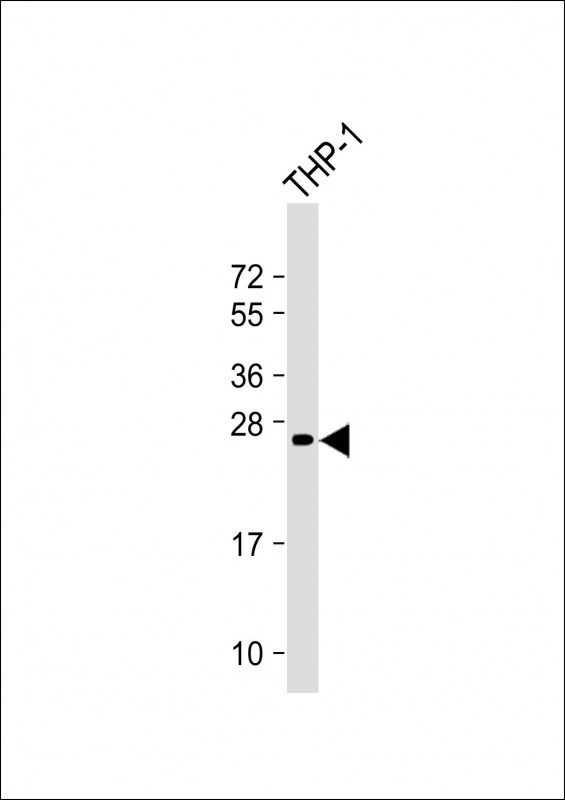Neurogenin3 Antibody
Purified Mouse Monoclonal Antibody (Mab)
- SPECIFICATION
- CITATIONS
- PROTOCOLS
- BACKGROUND

Application
| WB, E |
|---|---|
| Primary Accession | Q9Y4Z2 |
| Reactivity | Human |
| Host | Mouse |
| Clonality | monoclonal |
| Isotype | IgG2a,k |
| Clone/Animal Names | 1800CT113.128.46 |
| Calculated MW | 23077 Da |
| Gene ID | 50674 |
|---|---|
| Other Names | Neurogenin-3, NGN-3, Class A basic helix-loop-helix protein 7, bHLHa7, Protein atonal homolog 5, NEUROG3, ATOH5, BHLHA7, NGN3 |
| Target/Specificity | This Neurogenin3 antibody is generated from a mouse immunized with a recombinant protein between 1-214 amino acids from human Neurogenin3. |
| Dilution | WB~~1:4000 E~~Use at an assay dependent concentration. |
| Format | Purified monoclonal antibody supplied in PBS with 0.09% (W/V) sodium azide. This antibody is purified through a protein G column, followed by dialysis against PBS. |
| Storage | Maintain refrigerated at 2-8°C for up to 2 weeks. For long term storage store at -20°C in small aliquots to prevent freeze-thaw cycles. |
| Precautions | Neurogenin3 Antibody is for research use only and not for use in diagnostic or therapeutic procedures. |
| Name | NEUROG3 |
|---|---|
| Synonyms | ATOH5, BHLHA7, NGN3 |
| Function | Acts as a transcriptional regulator. Together with NKX2-2, initiates transcriptional activation of NEUROD1. Involved in neurogenesis. Also required for the specification of a common precursor of the 4 pancreatic endocrine cell types (By similarity). |
| Cellular Location | Nucleus {ECO:0000255|PROSITE-ProRule:PRU00981}. |

Thousands of laboratories across the world have published research that depended on the performance of antibodies from Abcepta to advance their research. Check out links to articles that cite our products in major peer-reviewed journals, organized by research category.
info@abcepta.com, and receive a free "I Love Antibodies" mug.
Provided below are standard protocols that you may find useful for product applications.
Background
Acts as a transcriptional regulator. Together with NKX2- 2, initiates transcriptional activation of NEUROD1. Involved in neurogenesis. Also required for the specification of a common precursor of the 4 pancreatic endocrine cell types (By similarity).
References
Ravassard P.,et al.Submitted (MAR-1999) to the EMBL/GenBank/DDBJ databases.
del Bosque-Plata L.,et al.Submitted (FEB-2000) to the EMBL/GenBank/DDBJ databases.
Ota T.,et al.Nat. Genet. 36:40-45(2004).
Deloukas P.,et al.Nature 429:375-381(2004).
Mural R.J.,et al.Submitted (JUL-2005) to the EMBL/GenBank/DDBJ databases.
If you have used an Abcepta product and would like to share how it has performed, please click on the "Submit Review" button and provide the requested information. Our staff will examine and post your review and contact you if needed.
If you have any additional inquiries please email technical services at tech@abcepta.com.













 Foundational characteristics of cancer include proliferation, angiogenesis, migration, evasion of apoptosis, and cellular immortality. Find key markers for these cellular processes and antibodies to detect them.
Foundational characteristics of cancer include proliferation, angiogenesis, migration, evasion of apoptosis, and cellular immortality. Find key markers for these cellular processes and antibodies to detect them. The SUMOplot™ Analysis Program predicts and scores sumoylation sites in your protein. SUMOylation is a post-translational modification involved in various cellular processes, such as nuclear-cytosolic transport, transcriptional regulation, apoptosis, protein stability, response to stress, and progression through the cell cycle.
The SUMOplot™ Analysis Program predicts and scores sumoylation sites in your protein. SUMOylation is a post-translational modification involved in various cellular processes, such as nuclear-cytosolic transport, transcriptional regulation, apoptosis, protein stability, response to stress, and progression through the cell cycle. The Autophagy Receptor Motif Plotter predicts and scores autophagy receptor binding sites in your protein. Identifying proteins connected to this pathway is critical to understanding the role of autophagy in physiological as well as pathological processes such as development, differentiation, neurodegenerative diseases, stress, infection, and cancer.
The Autophagy Receptor Motif Plotter predicts and scores autophagy receptor binding sites in your protein. Identifying proteins connected to this pathway is critical to understanding the role of autophagy in physiological as well as pathological processes such as development, differentiation, neurodegenerative diseases, stress, infection, and cancer.


